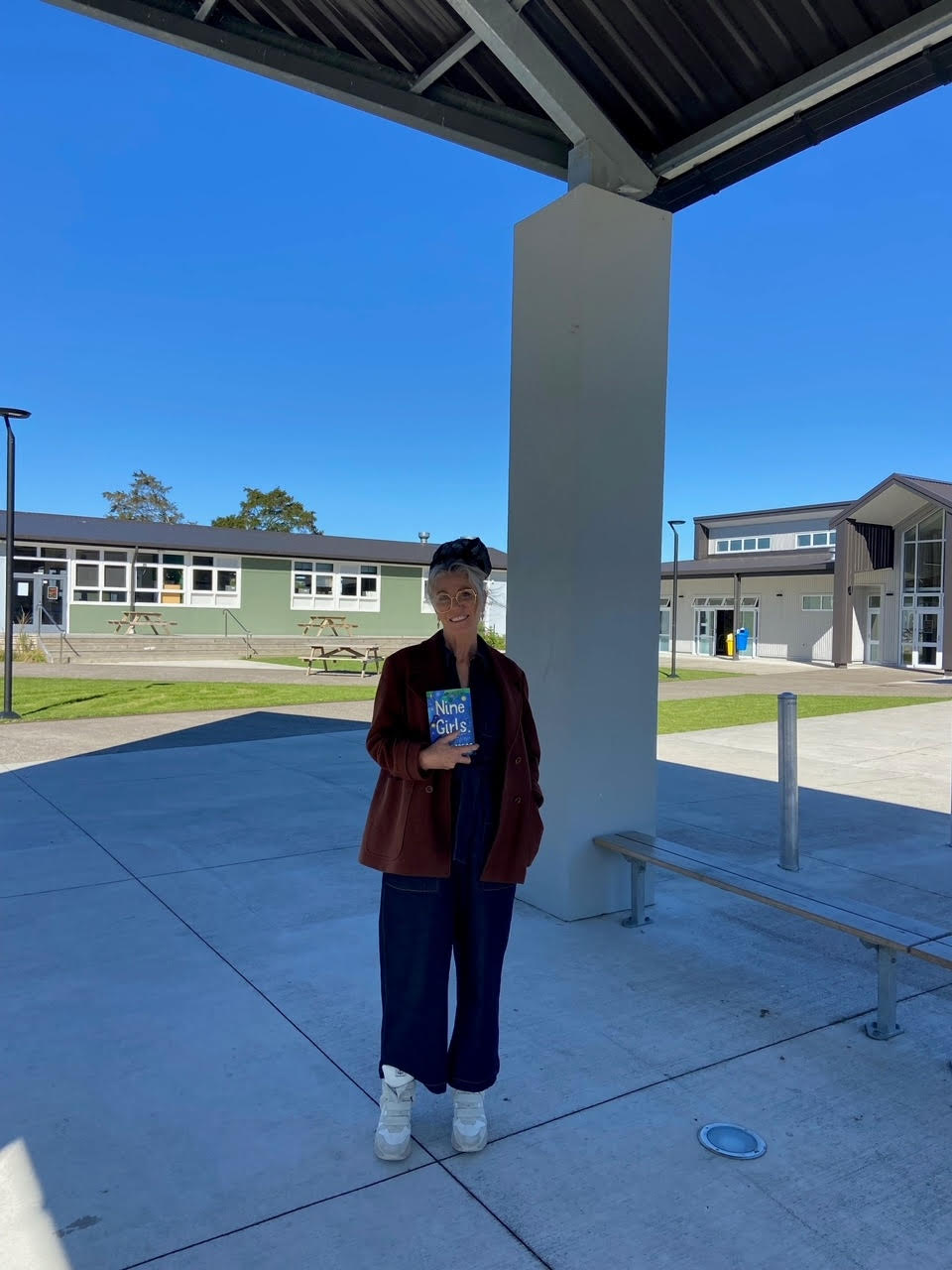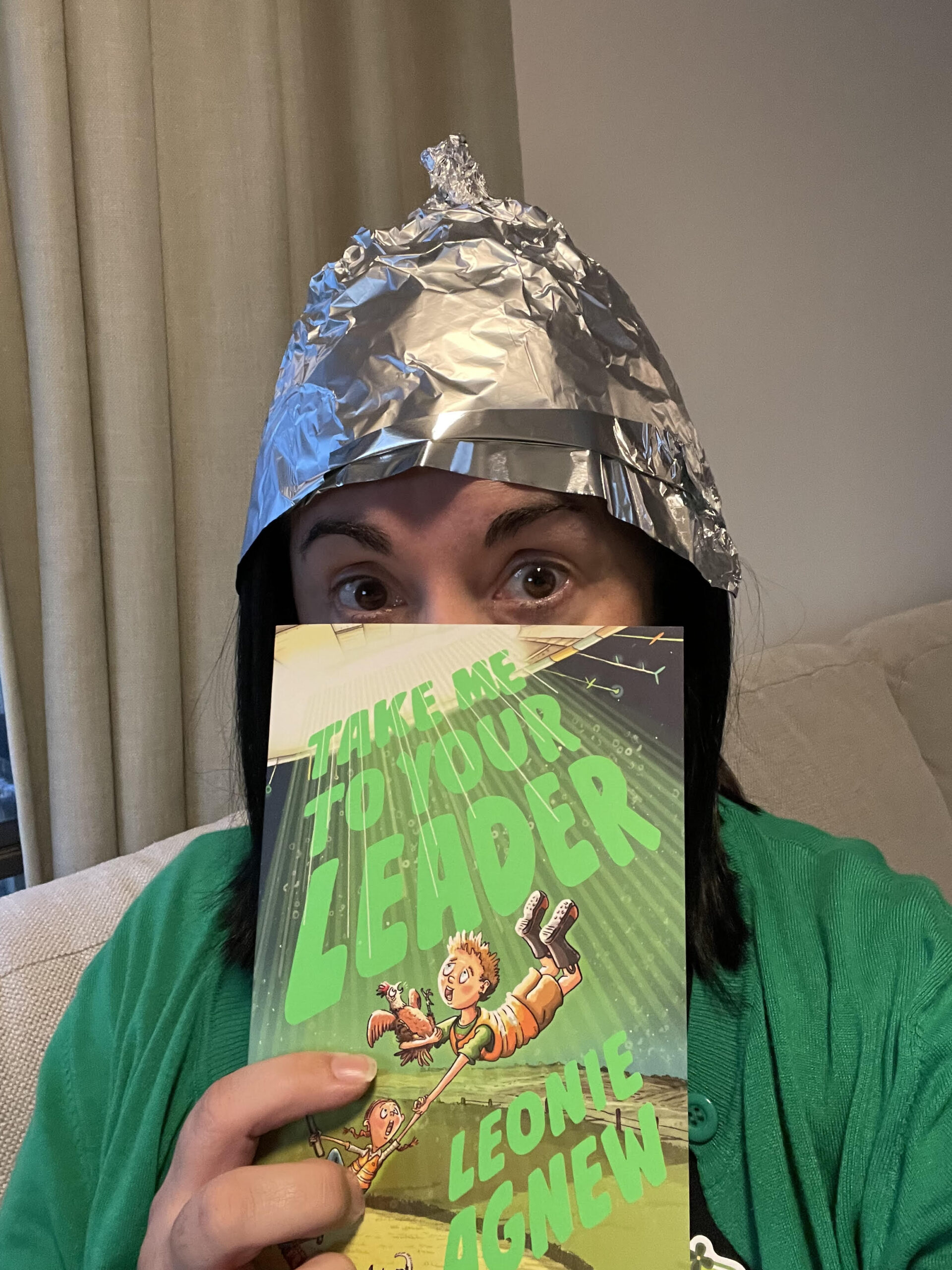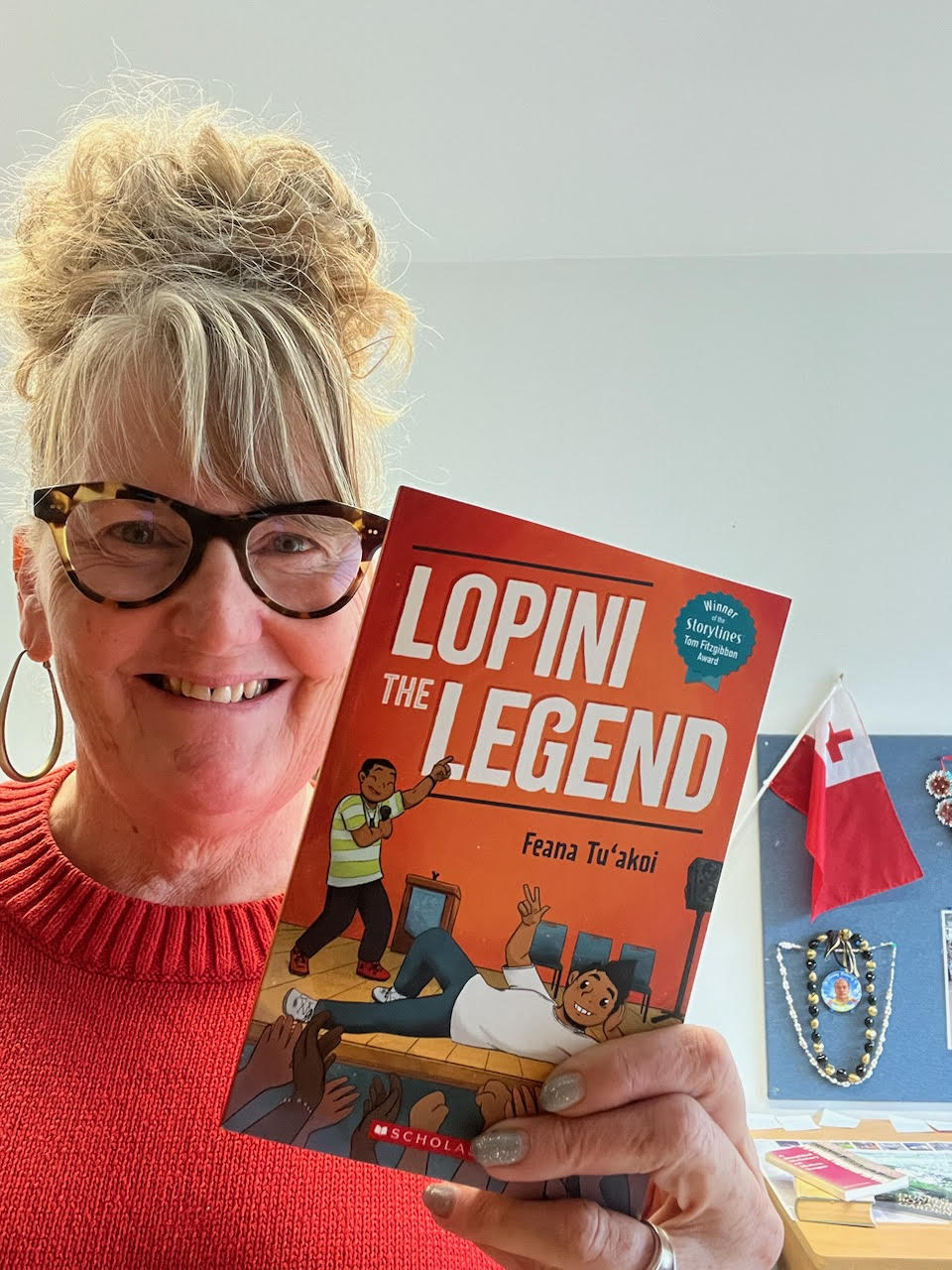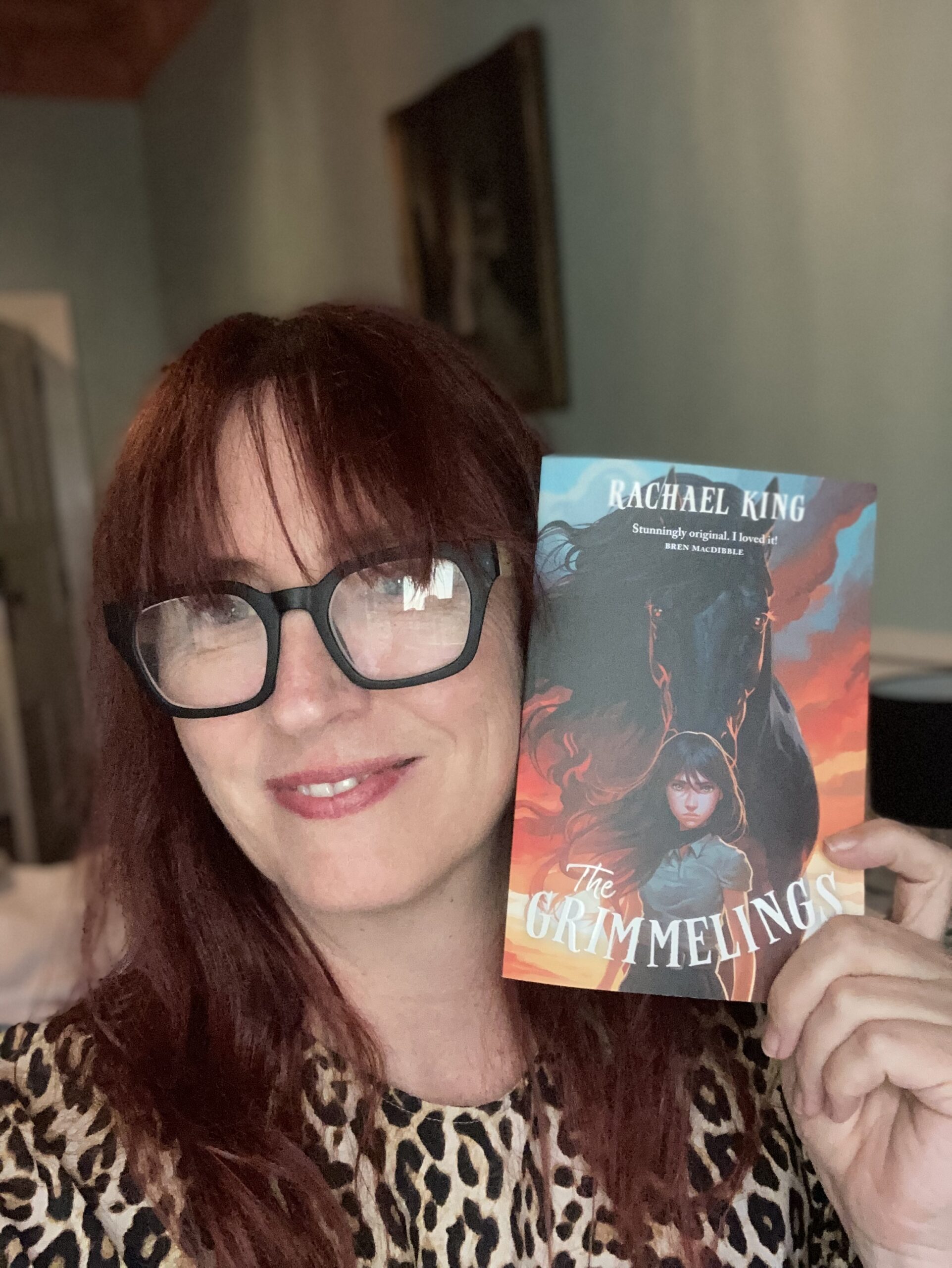When reading our Junior Fiction finalists, Sarah Forster was blown away as always by the brilliance of Aotearoa’s authors that write for this audience. She asked each of the five authors to answer five probing questions, including a well-disguised version of one that every author gets asked when they visit schools—where do your ideas come from?

What was the seed of the idea for this book? Why did it take the form it did—a children’s book for this specific audience?
Rachael King, The Grimmelings: I had the idea while on a train through the Scottish Highlands on my way to the Edinburgh Book Festival in 2017. I was struck by how similar the landscape was to the South Island, and the idea popped into my head that I could combine my childhood love of pony books and fantasy by writing about a kelpie/water horse, and that it would be a good follow up to my last novel, Red Rocks, which was about selkies. My notes from that day say: “Girl goes missing/community on edge”. It couldn’t be anything other than a middle grade novel.
Raymond McGrath, Big Little Blue—Doubledippers: ‘Big Little Blue’ is actually a TV series concept that is inspired by four themes: nature, music, my four children, and something I always had trouble navigating as a kid—making friendships. It became a graphic novel series as an experiment into an alternative way to present the stories, because getting a TV series made is complex and time-consuming—and honestly, I am very impatient! So I pitched it to Scholastic as a graphic novel on a whim. As it turns out, I’ve just had word that it has received funding from NZ on Air, and we’ll start producing it later this year!
Feana Tu′akoi, Lopini the Legend: I noticed that anxiety levels in schools were rising, especially after the first COVID-19 lockdown. People were putting a lot of pressure on themselves—kids were trying to be perfect kids and parents were trying to be perfect parents. I love a good ‘What if?’ question, especially when it links two things that don’t really go together, so I asked myself: ‘What if a perfectionist tried to succeed at failing?’ Other than deciding on the protagonist’s age—the target readers are generally the same age, or younger—I don’t put much thought into the audience when I write. I just tell my story.
Leonie Agnew, Take Me to Your Leader: Sometimes, there’s a switch in my brain which I can literally turn on. It’s the one I use when ‘searching for ideas for a kids’ book’. In this case, I was brainstorming ideas, looking at unusual things adults might do and applying those scenario to children. So, I made lists and was immediately interested in alien encounters. Then I wondered how children might fake one. Of course, the next question was—why would children fake UFOs? I got the answer from watching the news and seeing a rural school protesting the fact they were being shut down by the government. Then, the pieces fit together. Often, I have an interesting idea but I need a missing piece, which is usually an entirely separate idea that oughtn’t fit, but somehow does.
Stacy Gregg, Nine Girls: Nine Girls is very much based on my own whānau, my life growing up in Ngāruawāhia and the true stories of my Tupuna during the Tainui Wars and real-life events in the 70s and 80s such as Bastion Point and the Springbok tour. It could have lent itself to memoir I guess, but I am a middle-grade specialist and I wanted to tell the story in that genre. It’s an epic adventure story so the challenge for me was to make that diverse, complex content work as a hot-paced pakiwaitara for 8-12 year olds.

There are a lot of big emotions in these wonderful books, which I know as parents of two people in the age group they are written for, is entirely accurate! What is your approach to writing big emotions?
Rachael: I am lucky in that I can still viscerally access the way I felt as a child—which has definitely helped in my parenting as well! I think portraying big emotions in books plays an important role in allowing a child reader to know they are not alone in their feelings—and that while there may be consequences to those big feelings (of anger, resentment, even grief), the world won’t end, and relationships will not be ruined.
Raymond: Hmm…asking the BIG questions! I guess, we all have feelings. We feel something at all times, in everything we do. I generally try to just let the characters interact with each other in a situation and see what they’ll do, while in the back of my mind I am wondering what I would do if I was in the same situation. I try really hard not to tell readers what to think or make my characters do something I think the audience wants or expects them to do. I try to let the characters work it out for themselves. Usually, if you are just being honest in your writing and drawing, the emotions naturally flow with that.
Feana: I don’t really have a plan for writing big emotions. I just put myself in the scene and write my experience. I especially like to include the senses—what is seen, heard, smelled, tasted, or felt in the moment.
Leonie: Good question! I think there are several answers. One is to take a light approach and not over play the emotions. I find less is more because children aren’t teenagers, so my characters don’t get angsty about their problems. Instead, they tend to focus on finding ways to solve them. However, repressed or unrealised emotions escape in unexpected ways, just like in real life. That makes for interesting scenarios. When I do reach a scene that requires big emotions, I just try and keep it real. No angst, like I said, but plenty of honesty. A lot of emotion is in the body, so I also try to reflect that.
Stacy: Every Disney movie has the death of a parent in it. So does Harry Potter. For junior fiction death is a confronting emotion, but you have to go there. I’ve never written a book that doesn’t have death in it—it’s about how adept you are at handling the material so that your readers get to experience genuine grief and feel emotionally safe at the same time.

Tell me more about your main characters—if they were real and met you at an author visit, what story would they tell you?
Rachael: I think that Ella would be quite shy and stand-offish, but she might wait until the very end when the rest of the class have gone to tell me all about her special bond with her pony Magpie, who is her whole world in many ways. My characters became very real to me in writing this book, probably more than any other book I’ve written, and Ella carries so much of 13-year-old me inside her, including my chaotic brain. I also felt a huge empathy for her mother Morag and wanted to present her as a well-rounded character, not just as a parent on the sidelines. I missed them when I finished.
Raymond: Ha! I think Little Blue would be running around poking his nose into everything, asking a million questions and not really listening to the answers. Big Blue would be quietly watching and listening—or sleeping. I don’t think either of them would be that impressed by me or think I was some sort of big deal, though.
Feana: Lopini is a hard-out perfectionist, so he’d be stressing about how to talk to a ‘real, live author’, how to make his planned questions sound natural and whether he was making a good impression. His best mate Fi, on the other hand, would enjoy the experience and come out with left-field, off-the-cuff questions and comments as they occurred to her. Having said that, if Lopini was trying to achieve his weekly fail, all bets are off!
Leonie: Ha, there’s nothing more they could tell me. I know everything about them already! I don’t think Lucas would tell me anything, though. He’s not going to open up to a stranger at a book launch. If you haven’t read the books, I would say he’s very determined, but also anxious. His obsession with saving his school might mean he’d ask me to sign a petition, but faking aliens is definitely a secret. He won’t spill the beans. The character of Harriet might offer me advice. I don’t know whether it would be about fashion or a tip for investments, but I should probably listen!
Stacy: Hah. Titch from Nine Girls and I would get along pretty well if we met. If I signed a copy of the book for her I would write “Whāia te iti kahurangi, ki te tuoho koe, me he maunga teitei.” Follow your dreams. If you are you going to bow down then let it be to a lofty mountain.

The books all have excellent covers—did you get input into this, and what conversations did you have about this part of your book?
Rachael: I am lucky in that my publisher asks my opinion on things from the start. We agreed we wanted an illustrated cover, but I was adamant that I didn’t want to be able to see a face, and I didn’t want it to look too cartoonish. We had a lot to work with—a black horse, mountains, a lake, and of course the beautiful grimmelings sky, which carries the first and last gleams of light in the day. Amazing illustrator Max Thompson sent a few options, one along the lines of what I had asked for, and then another which showed this determined-looking girl with a huge horse looming behind her. I actually gasped when I saw it—it was so arresting. Everyone fell in love with it, including my UK publisher who acquired it.
Raymond: I designed and created everything—including the logos and fonts which are all bespoke to the series. Usually, it takes a few go’s, and cover design is a dark art I don’t understand. These are probably the fourth version, the first ones were rubbish. But the publisher and I work as a team on those because marketing needs to be taken into account.
Feana: Scholastic NZ sent me the mock-up, as they always do, but Story Hemi-Morehouse had done such a fabulous job that there wasn’t much to say. My embarrassingly ungrammatical input was as follows: ‘Love it—so joyful and fun!’
Leonie: No input, really. They just send it to me and ask what I think. I liked the fun energy of Paul Beavis’ drawings and thought it was a good match for the book.
Stacy: This is my 39th book and without doubt my favourite book cover I’ve ever had. Credit for that goes to the amazing Sarah Wilkins. I think it’s my favourite book title too—although that is mine and I had to fight for it. Nine Girls is a mnemonic for Ngāruawāhia. I went back and spoke at my old high school recently and none of the kids seemed to know that. I didn’t know whether to be sad that we’d lost that history or pleased that obviously everyone’s reo has progressed enough that we don’t need the mnemonic anymore.

Finally: how many distinct drafts did you make of this book?!
Rachael: I tried something new with this book and wrote a whole first draft without going back. Then a second, where I added a character—you won’t believe they were absent in the first draft as they are such an important part of the story now—and moved some chapters around, which added 10,000 words. I sent this to my agent and to a trusted reader for feedback and then did my final full draft which deepened the characters and the story, adding another 10,000 words, and polishing the prose. After that there was a lot of fiddling to get it to the final state, including significant cuts after it was sent to the publisher, to make it pacier. So three, maybe four, full drafts and a zillion little drafts.
Raymond: My answer might be annoyingly simple! The script is only a first draft, and the roughs phase for the books (panels, layout, sketches and pagination etc) was also only a first draft when I submitted them. There are notes and tweaks always, but these were minimal and generally things were close to what the publisher and I wanted early on. But ‘Double Dippers’ is also the third book. I had already created 26 episode scripts for the series, designed, and even animated the characters—so I was pretty familiar with what I was doing with them.
Feana: I don’t work in distinct drafts. I have one document that I edit and re-edit, until it’s as good as I can make it. Then I put it away for a couple of months, so I can read with ‘new eyes’ and go through the whole process, again. Luckily, editing and revising are my favourite parts of writing. The story is already there. It’s just a matter of shaping it.
Leonie: No idea! I do a lot of rewriting—a rewrite isn’t always a full edit but could still be substantial. If there are big changes, I start a new version, so I will always have access to the old one in case I change my mind and want to go back. However, I usually rewrite on the same doc, over and over.
Stacy: The very first draft I sent to my agent, Nancy Miles, didn’t actually have one of the main characters in it! I knew I was struggling to make the relationship between Titch and her Tupuna Irihapeti Te Paea Hahau Te Wherowhero work. It was all very sonorous and po-faced and it was Nancy who came out and called it and said “It’s just not working”. So I went away and came up with Paneiraira the eel. I also did a couple of crucial chapter rewrites quite late in the editing process.

Sarah Forster has worked in the New Zealand book industry for 15 years, in roles promoting Aotearoa’s best authors and books. She has a Diploma in Publishing from Whitireia Polytechnic, and a BA (Hons) in History and Philosophy from the University of Otago. She was born in Winton, grew up in Westport, and lives in Wellington. She was a judge of the New Zealand Book Awards for Children and Young Adults in 2017. Her day job is as a Senior Communications Advisor—Content for Te Herenga Waka—Victoria University of Wellington.



